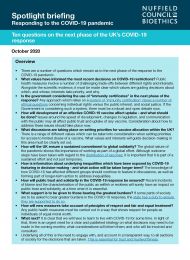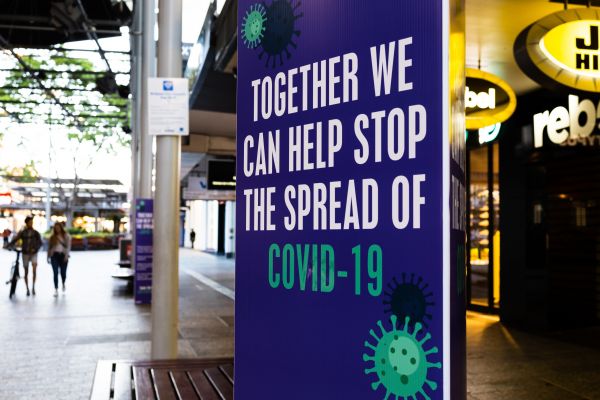Ten questions on the next phase of the UK’s COVID-19 response
Policy Briefing
Published 15/10/2020

4. What discussions are taking place on setting priorities for vaccine allocation within the UK?
The UK has already secured early access to around 340m doses of six different vaccine candidates currently being trialled. If and when a successful COVID-19 vaccine becomes available, there will not be enough doses or adequate delivery systems for the entire population to receive it immediately. That being the case, priority groups for the first doses need to be identified.
Internationally, the WHO Strategic Advisory Group of Experts on Immunisation (SAGE) has published a values framework which identifies healthcare workers, adults over 65, and adults with certain illnesses (cardiovascular and respiratory diseases, cancer, diabetes and obesity) as priority groups. In the UK, the Joint Committee on Vaccination and Immunisation (JCVI) has published updated interim advice which recommends prioritising older adults resident in care homes and care home workers, followed by those aged 80 and over, and health and social care workers. Remaining groups follow in age order - although the advice notes that this may change depending on the nature of the precise vaccine approved for use.
There is a range of different values which can be taken into consideration when setting priorities for access. The one most commonly taken prioritises maximising benefit - prioritising frontline workers who are vital to the provision of health and other services, and able to continue to save the “most lives” (although this is also founded in duties of reciprocity that the state gives back to those who made sacrifices at the beginning of the pandemic), followed by those most vulnerable to risk of infection and morbidity and mortality. Other approaches, however, could include prioritising younger people who are the greater transmitters of the virus, or a social justice approach which takes account of the disparities experienced by particular groups (e.g. racial and ethnic groups) and asks for those to be weighed as part of the decision.
As with all decisions made throughout the pandemic, there is no single scientific answer. It is all a matter of which values and interests are prioritised and why. That discussion should be had now, and the outcome communicated clearly with the public, well in advance of a vaccine becoming available.

Share